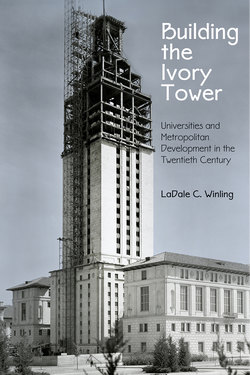Building the Ivory Tower

Реклама. ООО «ЛитРес», ИНН: 7719571260.
Оглавление
LaDale C. Winling. Building the Ivory Tower
Отрывок из книги
Building the Ivory Tower
Series Editors: Margot Canaday, Glenda Gilmore, Michael Kazin, Stephen Pitti, Thomas J. Sugrue
.....
Frank C. Ball used philanthropy and political clout to help the college in its new growth phase. In 1921 Muncie’s state legislators appropriated funds for a new science building that would dramatically increase the college’s instructional space. Governor Warren McCray, successor to James Goodrich, questioned the necessity of such an expense and worked to have it removed from the budget. Frank Ball caught wind of the proposed cuts and made a personal visit to Indianapolis to lobby the governor. The manufacturer won out as the governor shifted his position on the construction funds and signed on to state appropriations to the college for 1923.65 Ball was not to be trifled with.
There had been a single neoclassical building and wood-frame dormitory on the campus when the Balls bought it. It could not contain the college’s growing agenda. The institution turned to city planning, the progressive marriage of urban reform, scientific expertise, and the arts, to help provide for and manage the growth of the college. At the turn of the century, this urban reform movement joined with the new architectural profession to create the field of city planning, developing urban space and employing civic symbols to promote the uplift of the American metropolis in concert with bourgeois elites.66 Cuno Kibele was Muncie’s leading architect and a member of the civic leadership. He designed commercial buildings downtown such as the Wysor Building and the Commercial Club block; residential buildings throughout the city, including additions to and redesigns of the Ball homes at Minnetrista; and industrial plants, including expansion of the Ball Brothers manufacturing plant.67 Kibele was brought aboard to impose order on the campus. The college had averted the chaos that could have erupted around the bankrupt normal school, and Kibele’s hire ensured the grounds and buildings would have the classic Vitruvian features of firmness, commodity, and delight (Figure 5).
.....